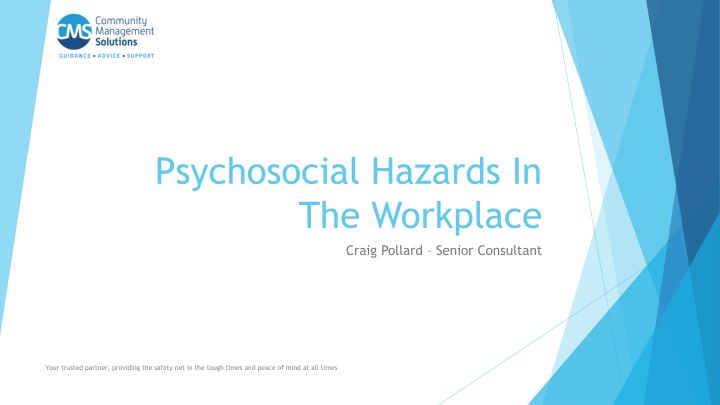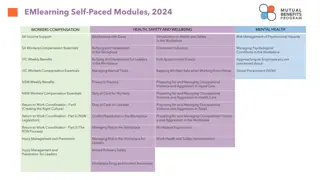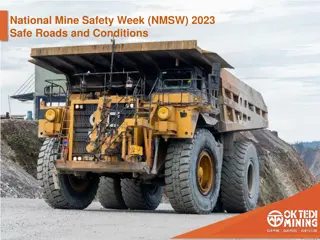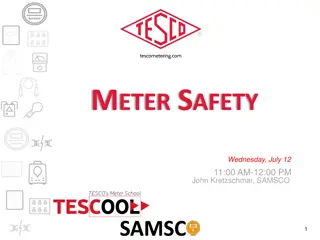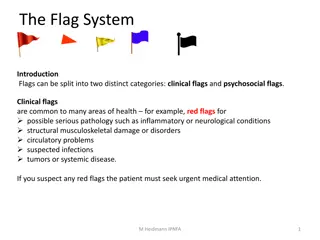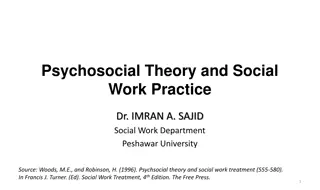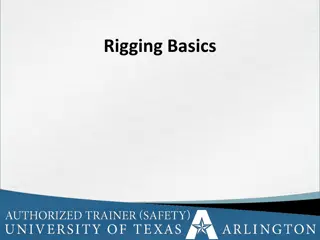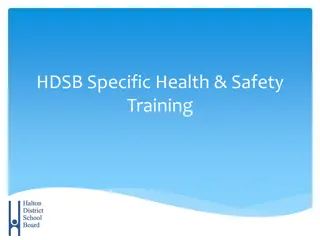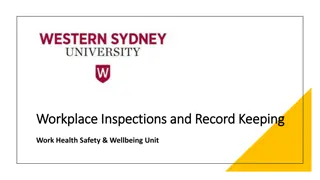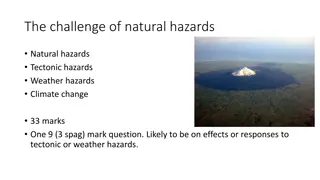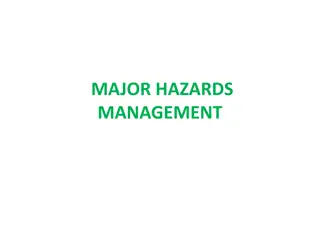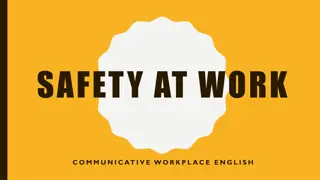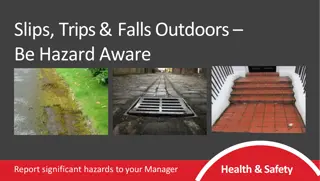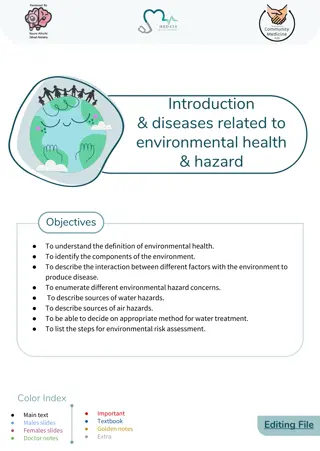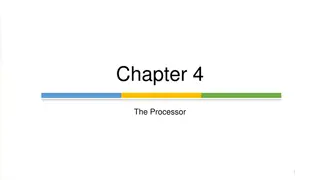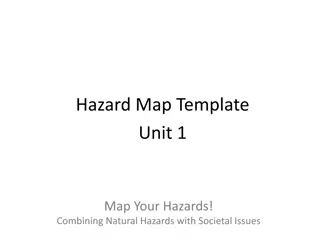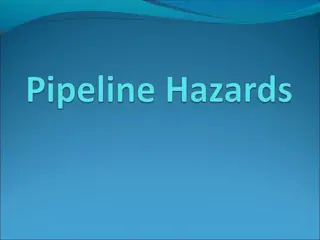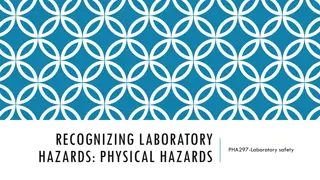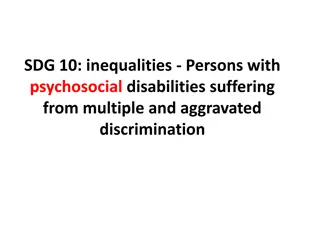Psychosocial Hazards in the Workplace
Workplace psychosocial hazards can arise from various factors such as job design, social interactions, and environmental conditions, leading to psychological harm. Risks include job demands, poor support, violence, bullying, and more. New regulations require measures to manage these risks effectively, considering exposure severity, task design, work systems, and environmental factors.
Download Presentation

Please find below an Image/Link to download the presentation.
The content on the website is provided AS IS for your information and personal use only. It may not be sold, licensed, or shared on other websites without obtaining consent from the author.If you encounter any issues during the download, it is possible that the publisher has removed the file from their server.
You are allowed to download the files provided on this website for personal or commercial use, subject to the condition that they are used lawfully. All files are the property of their respective owners.
The content on the website is provided AS IS for your information and personal use only. It may not be sold, licensed, or shared on other websites without obtaining consent from the author.
E N D
Presentation Transcript
Psychosocial Hazards In The Workplace Craig Pollard Senior Consultant Your trusted partner, providing the safety net in the tough times and peace of mind at all times
New Regulations The Queensland Government has introduced new Regulations into the Work Health and Safety Regulation 2011 which define Psychosocial Hazards . Regulation 55A states the following: A psychosocial hazard is a hazard that (a)arises from, or relates to (i)the design or management of work; or (ii)a work environment; or (iii)plant at a workplace; or (iv)workplace interactions or behaviours; and (b)may cause psychological harm, whether or not the hazard may also cause physical harm. Your trusted partner, providing the safety net in the tough times and peace of mind at all times
How Do Psychosocial Hazards Arise? Psychosocial Hazards stem from: the way the tasks or job are designed, organised, managed and supervised; tasks or jobs where there are inherent psychosocial hazards and risks; the equipment, working environment or requirements to undertake duties in physically hazardous environments; and social factors at work, workplace relationships and social interactions. Your trusted partner, providing the safety net in the tough times and peace of mind at all times
What Are The Risks? The risks which contribute to such hazards include: High/Low job demands Poor Environmental Conditions Poor Support Traumatic Events Poor Organisational Change Management Violence and Aggression Bullying Low Job Control Sexual Harassment Low Role Clarity Fatigue Low Reward and/or Recognition Poor Organisational Justice Interpersonal Conflict and Poor Workplace Relationships Remote or Isolated Work Your trusted partner, providing the safety net in the tough times and peace of mind at all times
New Regulations (cont) Determining control measures for psychosocial risks (Regulation 55D) (1)This section applies to a person conducting a business or undertaking who implements control measures to manage psychosocial risks under part 3.1. (2)In determining the control measures to implement, the person conducting the business or undertaking must have regard to all relevant matters, including (a)the duration, frequency or severity of the exposure of workers and other persons to psychosocial hazards; and (b)how the psychosocial hazards may interact or combine; and (c)the design of work, including job demands and tasks; and (d)the systems of work, including how work is managed, organised and supported; and (e)the design and layout, and environmental conditions, of the workplace, including the provision of (i)safe means of entering and exiting the workplace; and (ii)facilities for the welfare of workers; and (f)the design and layout, and environmental conditions, of workers accommodation; and (g)the plant, substances and structures at the workplace; and (h)workplace interactions or behaviours; and (i)the information, training, instruction and supervision provided to workers. (3)In this section worker s accommodation means premises to which section 19(4) of the Act applies. Your trusted partner, providing the safety net in the tough times and peace of mind at all times
Code of Practice The new Code of Practice has been introduced to give Employers (Persons Conducting a Business or Undertaking (PCBU)) a yard stick against which to measure their efforts to control and manage the risks of Psychosocial Hazards. The Code and Regulations also provide a weapon to the Government should an employee either suffer a Psychosocial injury, or make a complaint of an unsafe workplace, with which to censor a PCBU. Essentially the Code and Regulations work together to build a framework against which the efforts of an employer (or lack thereof) are judged. Your trusted partner, providing the safety net in the tough times and peace of mind at all times
What Does This Mean? The PCBU s duty to workers includes ensuring the health and safety of workers from harmful acts from third parties, such as clients, visitors, or patients. Examples of what the PCBU is required to do to manage psychosocial hazards include ensuring they provide and maintain: a safe working environment safe systems of work safe use, handling, and storage of equipment, structures and substances adequate facilities at work necessary information, training, instruction or supervision of workers, and conditions at the workplace are monitored to ensure any risks remain adequately controlled Your trusted partner, providing the safety net in the tough times and peace of mind at all times
How Do We Manage This? Part 3 of the Work Health & Safety Act 2011 provides that all risks must be managed in the same way, so psychosocial hazards are no different to a risk of falling or working with asbestos. The steps are: Identify psychosocial hazards Assess the risk Control the risks Review the controls Your trusted partner, providing the safety net in the tough times and peace of mind at all times
